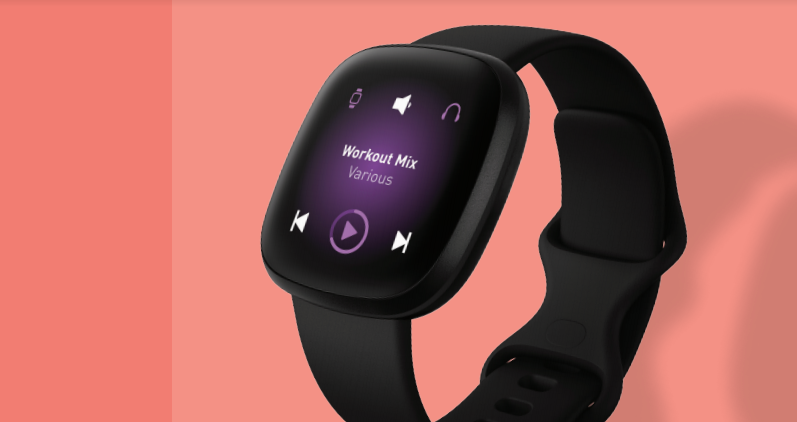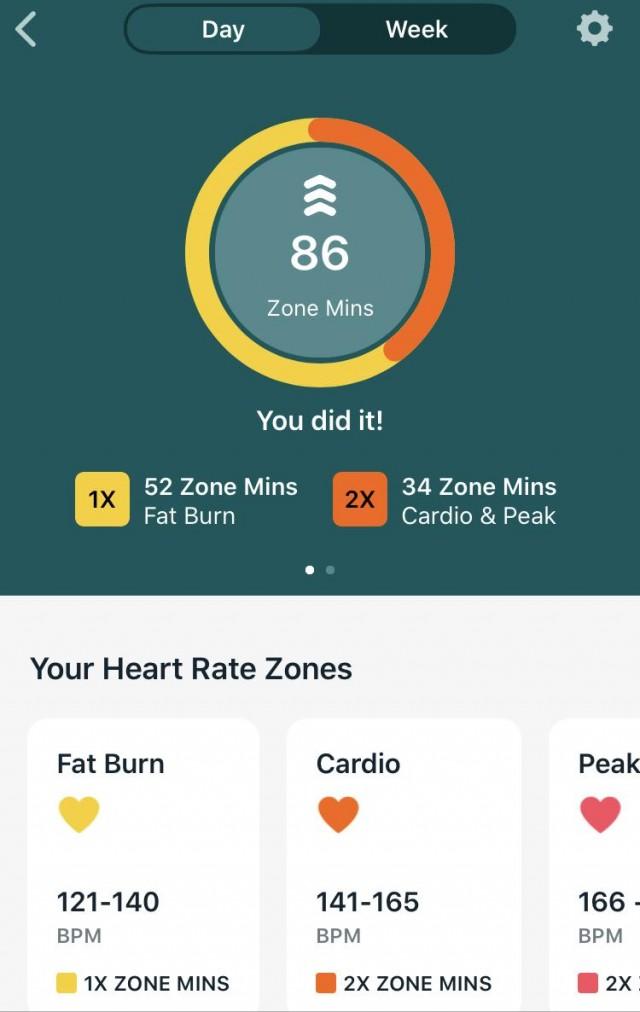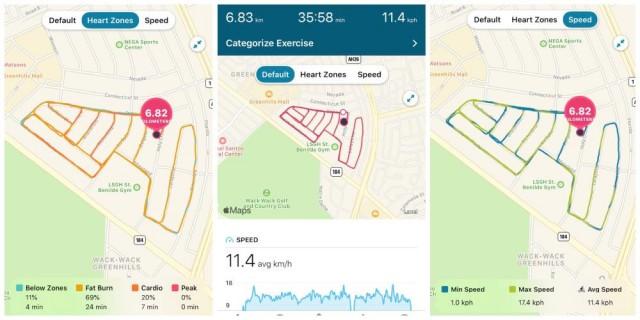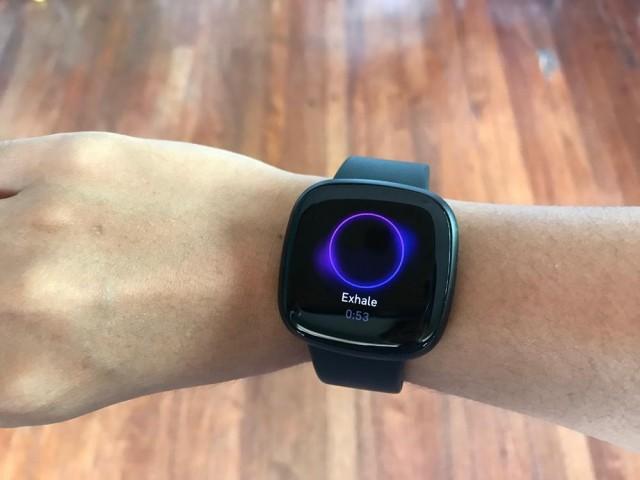How this smartwatch took my workouts — and my health — beyond 10k steps

Before the pandemic hit, I was a pretty active person. I was easily meeting my daily 10k step goal on my Fitbit Alta HR, and even if couldn't record wall climbing as an exercise, I was at my climbing gym three times a week, training for an outdoor climb scheduled in May.
Like everything, that didn't push through. Worse, I was left with no opportunity to work out. Meeting my daily 10k step goal was it.
And it kept me going, actually. Having that daily 10k goal got me establishing a 30-minute morning exercise early during the lockdown. It gave easy breaks between tasks — a super important thing to do, I learned, as the work from home situation started to bog down on me. And when anxiety or worry began to surge, I added to my steps by walking it off.
Despite all these, I wasn't in tiptop shape. My migraines worsened and became more frequent. My digestion was whack. And despite topping the 10k steps with biking twice a week, I gained so much weight, enough to move a size bigger. Gasp.
I turned back to my 10k steps to solve the problem, but instead, my trusty Alta HR conked out on me. Early in the new year, I upgraded to a Versa 3, one of two new smartphones that the company launched amid the pandemic.
One of the first things it did, was explain to me that hitting 10k steps every day wasn't enough.
The smartwatch has all the bells and whistles that will positively distract anybody living in our less-than-ideal situation, but it's the improved fitness tracking features — "motivation on your wrist" it proudly says — that, two weeks in, has me feeling like I was back on the road to fitness.
1. It counts active zones instead of active minutes. Previously, the Alta HR counted the duration of time I was moving, whether it was an intense bike ride around the village or a lazy gander around the living room.
This time around, the Versa 3 tracks active zone minutes, or time spent doing a heart-pumping activity.

Fitbit has cited the American Heart Association and the World Health Organisation to both recommend 150 minutes of moderate-intensity activity weekly, which Fitbit has calculated into 22 zone minutes a day.
Using your heart rate data to gauge the intensity of your activity, this metric will turn to yellow when you hit the Fat Burn Zone, into orange when you hit Cardio, and into pink when you hit Peak.
Despite meeting 10k steps, it was rather annoying that my active zone meter remained a boring blue. So I started walking faster, involving our 16-step stairs even, and what do you know. As I began to sweat more often, the meter also began to turn yellow.
And here's the interesting thing: Where before I only got tired after 30 minutes of aimless walking, this time, I began to feel what they say about working out: I was actually energised thereafter.
2. It has a GPS tracker. The beginning of the year had me challenging myself to increase my bike rides from twice to three times a week. I haven't been very successful on this front, and then I learned how to work the Versa 3 GPS tracker.
There are 20 exercises it can track, including biking, yoga, swimming, golf, and hiking. Apart from counting steps, it can also track your pace, distance, that part of your route that punished you the most, and you can see all this on the map in app.

It's been interesting to say the least. Apart from the usual — calories burned, heart rate, how many active zone minutes it's contributed — the GPS tracker, through the map, has also shown me how silly my usual route actually is, and has somehow made me want to map out a better route for future rides. Won't you look at that! Already committing to future rides!
3. It has a whole gamut of health metrics. We're not gonna lie to you, it can get intimidating. From simply counting your steps, Fitbit has gone over and beyond with the Versa 3, which is now also measuring your oxygen saturation, skin temperature, heart rate variability, as well as breathing rate.
It will need you to get into Premium to get the whole picture, and thankfully the device comes with a free trial of 90 days. But to be honest, the graphs shown on the app aren't enticing to say the least. Fitbit's quite clear these metrics are intended for general wellness purposes only, so up until weekend, when I have a bit more time an bandwidth to try and understand them, the health metrics have remain unopened.
Suppose it's good to know though that they're at my fingertips should I need them in the future.
4. Its relax feature is pretty good. The Versa 3 has a relax feature that allows you subtle pockets of mindfulness you can take throughout your day. We say subtle because you could be meditating — or rather, be doing calming breathing exercises — guided only by that device on your wrist, and nobody will know.
The relax feature allows you to take the simplest breathing exercises to help you destress at any given time. You can adjust its duration anytime between 1 minute and 10 minutes, and it comes with a couple of cues on when to inhale and exhale — through small vibrations on your wrist, as well as sleek visuals you can follow from the screen.

The device will tell you when you're able to align well, if you're breathing right. It will tell you how your heart rate's changed, and will ask you how you're feeling after. It's nothing like the meditation apps that's mushroomed al over the app store — this one is super simple — but none of those, too, can provide you with a sly session of mindfulness as Versa's.
Just a funny observation that you can eventually wave off: Fitbit lets you set a weekly goal for relaxation, which doesn't sound exactly compatible — having goals and relaxing — but whatever.
5. Everything else. Apart from all the metrics — and the smartphone capability, mind — the Versa 3 has little add-ons proven to motivate anyone. We mean, being able to connect with streaming apps like Spotify, for instance, to pump you up while running.
It also has an alarm clock that wakes you up with the gentlest tickle on your wrist and then with a funny "look alive!" message on the watch face that will make anybody smile and get up for a morning workout session.
So even if the active zone minutes can discourage sometimes, it's the little things like the celebratory vibration for when you achieved your goal or the cute messages of encouragement that makes everything worth it. — KG, GMA News



